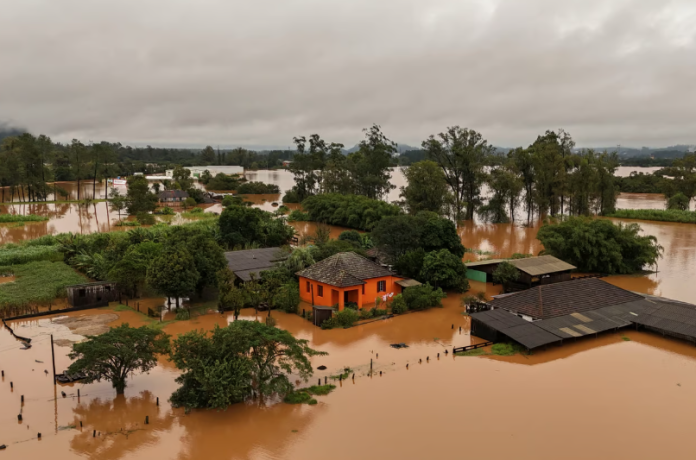
2024 was the first year to break through the 1.5C temperature barrier, an EU agency finds.
BRUSSELS — Humanity is “dangerously close” to heating the planet beyond the 1.5 degree Celsius boundary after a record year of heat, scientists warn.
The European Union’s Copernicus climate monitoring service confirmed that 2024 was the hottest year on record on Friday, with the global average temperature in the past 12 months hitting 1.6C above pre-industrial levels.
That makes 2024 the first year to exceed the totemic 1.5C barrier associated with the 2015 Paris Agreement, although the findings don’t amount to a breach of the accord.
The targets in the agreement, which saw countries around the world pledge to keep warming below 2C and ideally within 1.5C, refer to long-term warming over several decades, not a single year. But last year’s unprecedented temperatures are a sign that the world is getting close to breaching the lower goal of the Paris Agreement, scientists say.
“Each year in the last decade is one of the 10 warmest on record. We are now teetering on the edge of passing the 1.5C level defined in the Paris Agreement, and the average of the last two years is already above this level,” said Samantha Burgess, climate lead at the European Centre for Medium-Range Weather Forecasts, which manages Copernicus.
“A single year with temperatures 1.5C above pre-industrial levels does not mean we’ve reached 1.5C of global warming. However, it does mean we’re getting dangerously close,” said Joeri Rogelj, research director at Imperial College London’s climate-focused Grantham Institute.

While the naturally warming El Niño phenomenon contributed to higher temperatures last year, the scientists are clear that man-made climate change — driven by burning oil, gas and coal, which all release carbon dioxide — is the main cause. Last year, levels of CO2 and other planet-warming greenhouse gases in the atmosphere hit another record, the scientists said.
The consequences of climate change, such as more frequent and severe extreme weather, increase with every tenth of a degree of warming; beyond 1.5C, the planet risks crossing thresholds that could trigger abrupt changes and climatic feedback loops.
Warmer air holds more moisture, and the scientists found that the amount of water vapor in the atmosphere reached a record last year at 5 percent above the 1991-2020 average.
High humidity increases the risk of extreme rainfall and subsequent flooding. It also supercharges storms when combined with high ocean temperatures. Additionally, humid weather heightens the dangers that extreme heat poses to human health.
Last year saw climate-driven disasters claim lives and destroy livelihoods around the globe, from floods in Spain and Brazil to storms in the United States and the Philippines. As Copernicus published its findings, ferocious wildfires were tearing through Los Angeles, forcing the evacuation of tens of thousands of inhabitants.
At the same time, the incoming U.S. administration under returning President Donald Trump is preparing to exit the Paris Agreement — and double down on fossil fuel exploitation.





















